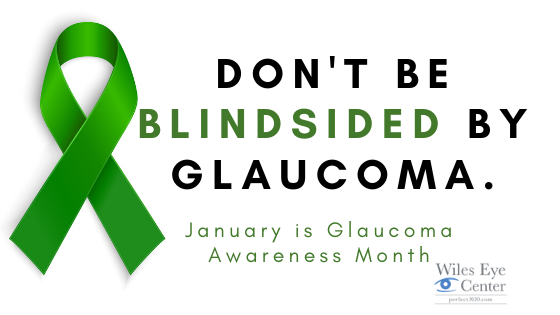 Glaucoma is a group of diseases that cause damage to the optic nerve within the eye. The optic nerve is a bundle of over 1 million nerve fibers that are responsible for transmitting signals from your eyes to your brain. Did you know that Glaucoma is the leading cause of blindness across the entire planet? More than 60 million people worldwide are affected by this blinding condition. Nearly 3 million people in the United States alone suffer from Glaucoma. What’s even more shocking is that this number is expected to grow as years progress. The most detrimental fact about Glaucoma is that nearly half of those suffering from this condition are unaware that they even have it.
Glaucoma is a group of diseases that cause damage to the optic nerve within the eye. The optic nerve is a bundle of over 1 million nerve fibers that are responsible for transmitting signals from your eyes to your brain. Did you know that Glaucoma is the leading cause of blindness across the entire planet? More than 60 million people worldwide are affected by this blinding condition. Nearly 3 million people in the United States alone suffer from Glaucoma. What’s even more shocking is that this number is expected to grow as years progress. The most detrimental fact about Glaucoma is that nearly half of those suffering from this condition are unaware that they even have it.
Most people are unaware that they have Glaucoma because this condition does not come with symptoms in its most common types. There are eight different types of glaucoma: primary Open-Angle Glaucoma, normal-tension Glaucoma, Angle-Closure Glaucoma, Acute Glaucoma, Pigmentary Glaucoma, Exfoliation Syndrome, Trauma-Related Glaucoma, and Childhood Glaucoma. As you could have guessed, there are many different causes for Glaucoma. Causes linked to this disease include genetics, injury, and increased pressure within the eye seems to be a common contributing factor to optic nerve damage.
In Primary Open-Angle Glaucoma, there are no symptoms. Additionally, this type of Glaucoma affects approximately one percent of Americans. In POAG, the pressure within the eye gradually increases, causing damage to the optic nerve. Once a significant amount of damage occurs to the optic nerve, vision begins to deteriorate. There is not a cure for this type of Glaucoma, but there are many treatment options. These treatment options include oral medication, surgery, and drops.
In Normal-Tension Glaucoma, the pressure within the eye remains in the normal ranges, but damage still occurs to the optic nerve. It is believed that this damage may occur as a result of poor blood flow through the optic nerve. This type of Glaucoma is still under research.
In Angle-Closure Glaucoma, the chamber through which the eye naturally drains fluids is abnormally small. As pressure increases, this “angle” through which fluid is drained becomes smaller, hence the name.
In Acute Glaucoma, pressure rapidly increases within the eye. Symptoms of Acute Glaucoma include pain in the eye, swelling of the cornea, blurred vision, and seeing halos around light. When this occurs, the patient should seek help immediately, as it is an emergency situation.
Pigmentary Glaucoma is an inherited version of Open-Angle Glaucoma where the pigment within the eye may shed and “clog” the chamber where the fluid is naturally drained from the eye. With this type of glaucoma, it affects people in their twenties and thirties, and commonly affects those who have trouble seeing far distances. Those suffering from nearsightedness have abnormal distortions in the anatomy of their eye, which may play a role in why they’re most commonly affected by this type of Glaucoma.
Exfoliation Syndrome is similar to Pigmentary Glaucoma in the sense that pigment is disconnected from the eye and clogs the chamber through which fluid is naturally drained from the eye. The difference with Exfoliation Syndrome is that a white-ish material similar to dandruff builds up on the eye, and when it is rubbed, it attaches to the pigment within the eye, causing the pigment to break off as well as the white material.
Trauma-Related Glaucoma and Childhood Glaucoma both give away information within their names. Obviously, Trauma-Related Glaucoma is caused by an eye injury such as a penetrating injury or chemical burn. This is why it is important to have your eyes checked after an injury occurs. Childhood Glaucoma occurs at birth most commonly. However, Glaucoma can form during the earlier stages of a child’s life and vision is often saved through surgery.
Although each type of Glaucoma is different, there is one thing that is true in each type: early detection is crucial. This is true because once vision loss occurs, it is irreversible. Glaucoma can be detected through comprehensive eye exams. It is recommended to have these exams annually, but it may be necessary to have an exam done more often, especially if you have family members that suffer from glaucoma. Those with a family history of glaucoma have a higher risk of developing the disease themselves. Others who are at a higher risk for developing Glaucoma include everyone over the age of 40, those who have increased pressure within the eye, those who have diabetes, nearsightedness, a previous eye injury, or abnormal blood pressure. Glaucoma most commonly affects those of African, Asian, or Latino Descent, so that could also be a deciding factor in how often comprehensive exams may be necessary. As always, it is best to discuss with your doctor your risks, and how often you should receive an exam. If you have any questions or would like to make an appointment, please call us. The number to our Kansas City location is 816-455-2020. Our St. Joseph’s office location can be reached by calling 816-279-7015.
Attributions: http://glaucomafoundation.org/
The post Gluacoma: What You Need to Know About The Silent Thief of Sight. appeared first on .
from https://perfect2020.com/gluacoma-what-you-need-to-know-about-the-silent-thief-of-sight/
via https://perfect2020.com
